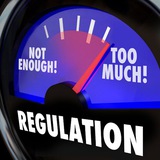tgoop.com/smart_regulation/4677
Last Update:
Выдержки из исследований по эффективности ОРВ - неплохой ориентир для измерения эффективности GR в регуляторной политике.
Да, авторы считали для госсектора (и примерно после 10-15 лет после внедрения в соответствующих юрисдикциях), но это вполне сопоставимо с нынешней российской ситуацией, поэтому и можно спроецировать эти каузальные зависимости.
There are many anecdotes in which RIA identified less costly regulations that would achieve results equivalent to more expensive alternatives. For example, the first proposal of the REACH regulation from the European Commission would have imposed €10 billion in costs on the European chemicals industry. After RIA stimulated a public debate about various alternatives, the regulation was revised to make it easier to comply, without significantly changing benefits. The final cost was €2 billion. The RIA cost the Commission about €1 million, producing a social return on investment of 10,000 to one.
A study of 15 RIAs by the U.S. Environmental Protection Agency showed that RIA increased net benefits to society from environmental regulations. Three of the RIAs showed that the net benefits from recommended improvements in the regulations would exceed $10 billion. The total cost of preparing all of the 15 RIAs studied was approximately $10 million. Thus, the EPA RIAs yielded a return on investment of 1,000 to 1. Four of the analyses studied showed how less costly regulations would achieve results equivalent to the more expensive alternatives. In two of these cases, the analyses showed that less costly alternatives would lead to greater reductions in environmental risk. The cost of RIA was low—on average, 0.1 percent of the compliance cost of a rule over five years.
BY Комиссия по Регуляторике
Share with your friend now:
tgoop.com/smart_regulation/4677
